Table of Contents
ToggleIntroduction :
Best pull exercises with dumbbells mean A full scope of exercise center gear isn’t generally useful or even accessible – making a dumbbell possibly pull exercise very helpful whenever performed appropriately.
Luckily, practically every activity with a dumbbell is likewise conceivable with a dumbbell, permitting home-rec center proprietors or lifters with a solid irregularity to receive the rewards of free weight exercises, no surprises.
Most dumbbell pull exercises focus on the back and biceps muscles of the body, as a rule, including the exerciser making counter-obstruction towards themselves instead of away from them.
Benefits of Pull Exercises with Dumbbells
Best pull exercises with dumbbells offer a few critical advantages for general wellness and strength improvement. Right off the bat, they focus on the muscles of the chest area, especially the back, biceps, and shoulders. This further develops stance and equilibrium by reinforcing the muscles answerable for pulling developments.
Furthermore, best pull exercises with dumbbells draw in stabilizer muscles, upgrading joint steadiness and lessening the injury gamble. They additionally advance muscle evenness and improvement, as each side of the body works autonomously.
Also, dumbbell pull exercises are flexible and can be adjusted to different wellness levels. They can be effectively changed by changing the weight, redundancy, and strategy to suit individual necessities and objectives.
At long last, these activities can be acted in various conditions, making them available for home exercises or rec center meetings. Integrating maneuver practices with hand weights into your routine can add to a balanced workout schedule, advancing strength, balance, and practical chest area strength.
Seven best pull exercises with dumbbells
Bent-Over Dumbbell Rows
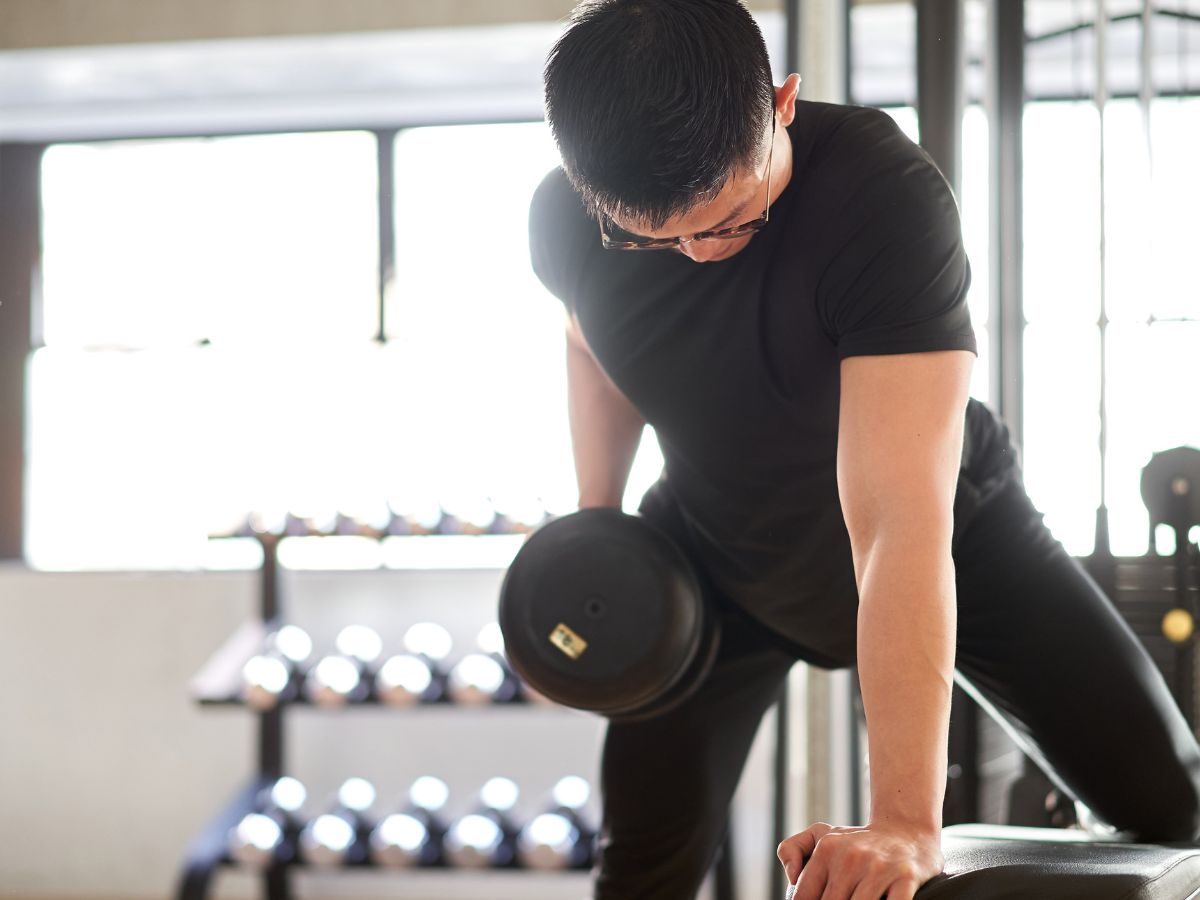
Bent-over dumbbell rows are a compound strength-preparing exercise fundamentally focusing on the muscles in your upper back, including the latissimus dorsi and rhomboids, as well as the biceps and lower back. To play out this activity, stand with feet shoulder-width separated, holding a free weight in each hand, palms confronting your middle.
Twist at the midriff until your chest area is lined up with the ground, keeping your knees marginally bowed. With a nonpartisan spine, withdraw your shoulder bones and pull the dumbbells towards your lower ribcage, pressing your back muscles. Lower the loads down with control. This exercise works on back strength, stance, and, by and large, chest area improvement.
Tips and Tricks: Bent-over dumbbell Rows, keep a level back, draw in the center, and withdraw the shoulder bones. Utilize controlled developments, breathing out while lifting and breathing in while bringing down the loads. Begin with a weight you can deal with serenely and steadily increment it. Keep elbows near the body, focusing on the mid-back muscles for greatest viability.
Single-Arm Dumbbell Rows
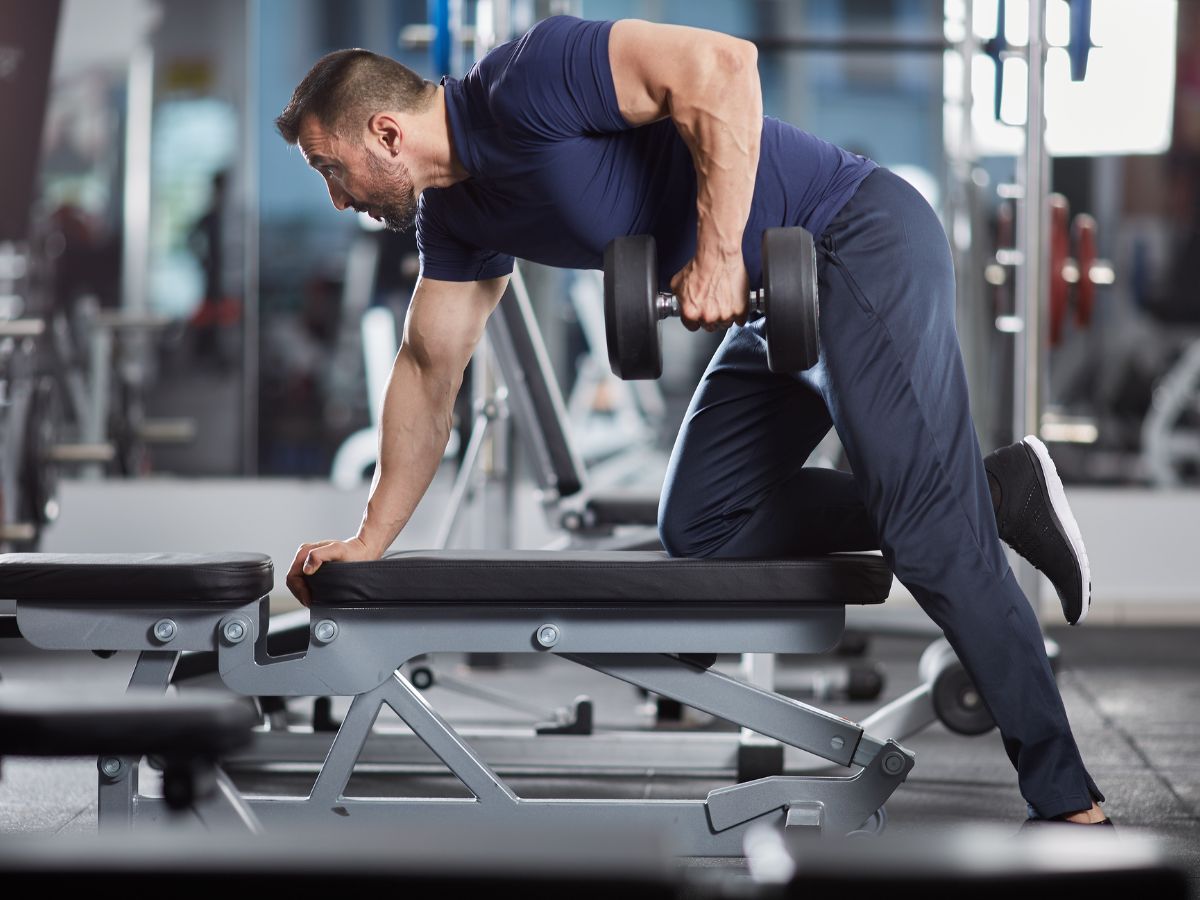
The dumbbell row, or the single-arm dumbbell row, is one of those activities that will remain in style. It’s basic to do — you stoop on a seat and line your arm to your side — and it requires only a hand weight to stack the development. It’s likewise a one-sided workout, which simultaneously trains one side of your body. Single-arm moves help to level out strong lopsided characteristics and consume more calories after some time since you’re multiplying your responsibilities.
Tips and Tricks: Single-arm dumbbell Rows” are an incredible back workout. Keep a level back, connect with your center, and withdraw your shoulder bone. Begin with a reasonable weight. Pull the free weight toward your hip, keeping your elbow near your body. Crush your back muscles at the top. Substitute arms for equilibrium and strength.
Dumbbell Pull-Ups
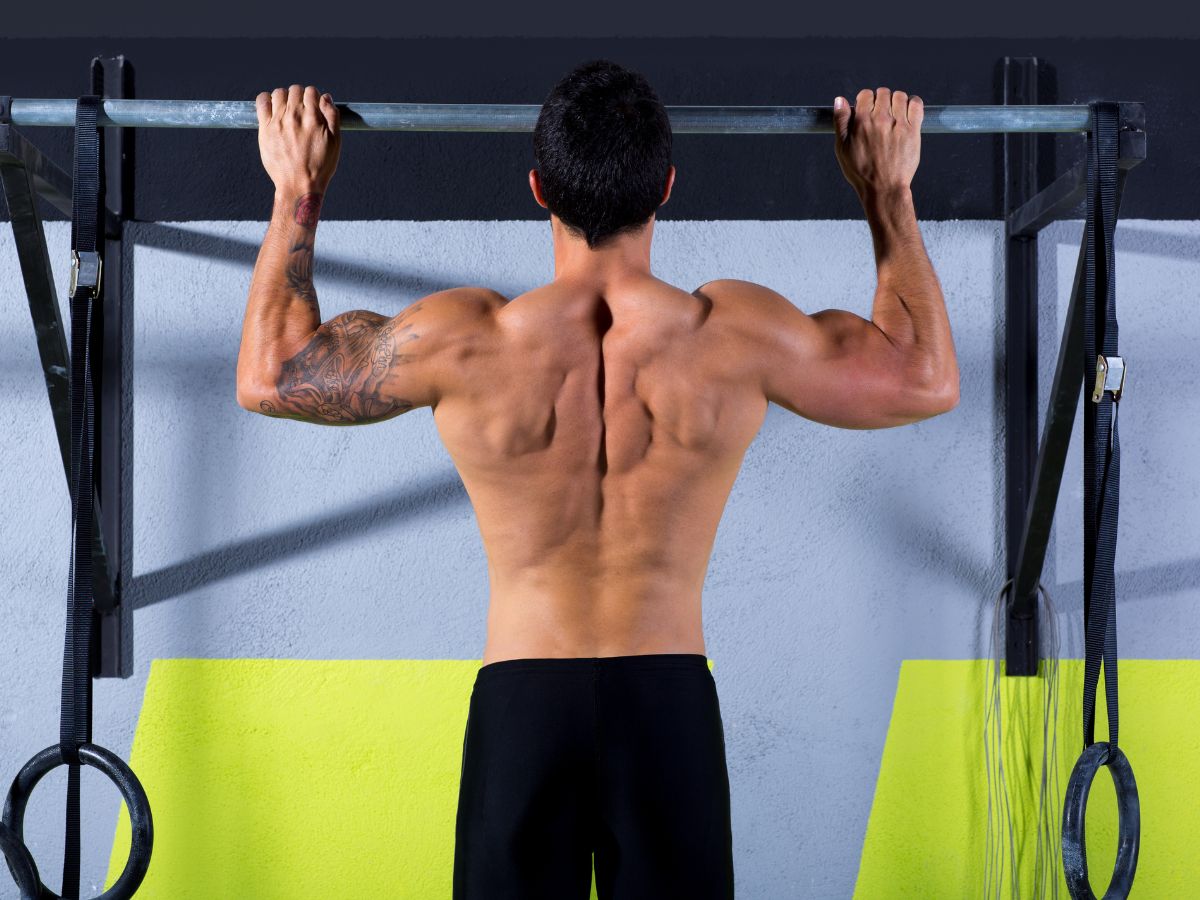
Pull-ups are one of the hardest moves to dominate. They require chest area strength (explicitly from your back muscles and shoulders), control, and mental strength. To assist you with arriving at your objective of figuring out how to do pull-ups, I made an aide of moves you ought to begin doing to develop a chest area fortitude establishment.
The dumbbell exercises will assist you with developing chest area fortitude; you should likewise keep doing other chest area works, similar to push-ups and rear arm muscle expansions. The draw-up varieties will assist you with getting comfortable with the development example and separate each part of a draw-up.
Assuming you’re feeling enticed to do this multitude of activities together in one exercise, don’t; you’ll be very sore if you do. All things being equal, integrate these activities into your solidarity programs. You can add them to a chest area exercise with pushing developments, similar to push-ups and the seat press, and you can likewise add them to body exercises with pushing works, similar to crouch and lurches.
Tips and Tricks: Dumbbell Pull-Ups, using a hand weight between your feet, uplift standard pull-ups. Hold the hand weight securely. Stay aware of extraordinary design, pull in your middle, and pull your facial structure over the bar. Progressively lower yourself with control. Start with reasonable weight and add bit by bit. This assortment gathers remarkable chest region and handle strength.
Dumbbell Pull-Overs
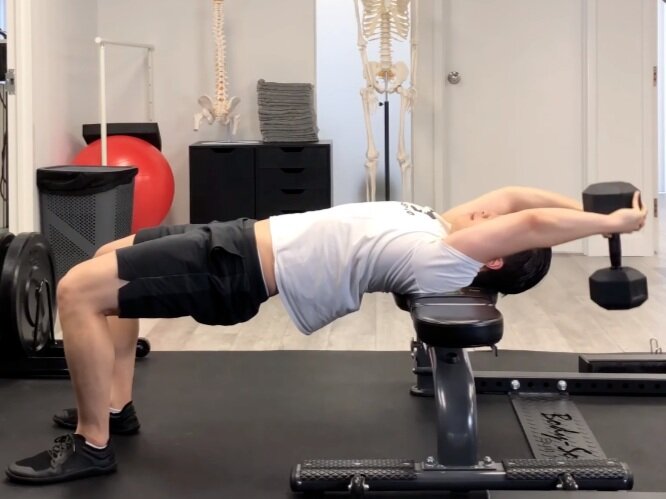
Dumbbell Pullovers are a profoundly compelling chest area practice for the chest, back, and rear arm muscles. To play out this activity, lie level on a seat with your upper back and shoulders upheld and your feet fixed solidly on the floor. Hold a free weight with two hands over your chest, arms marginally twisted. Bring down the hand weight in reverse in a controlled movement
while keeping your center drawn in and keeping a slight curve in your elbows. Feel the stretch in your chest and lats, then, at that point, pull the load back up to the beginning position. Hand weight Pullovers are an extraordinary expansion to your daily gym practice for developing grit and improving general chest area definition.
Tips and Tricks: Dumbbell Pullovers are powerful for lats and chests. Lie on a seat, hips somewhat beneath shoulders. Keep a slight curve in your elbows. Bring down the dumbbell in reverse, feeling a stretch, then pull it back up. Keep a steady center and controlled development. Begin with a lighter load to consummate structure.
Dumbbell Shrugs

Dumbbell shrugs are a basic yet compelling activity for focusing on the trapezius muscles in the upper back and neck. To play out this activity:
- Stand with a free weight in each hand, arms completely stretched out by your sides.
- Keeping your arms straight, lift your shoulders as high as expected, as though you’re attempting to contact your ears with them.
- Hold the withdrawal briefly, then, at that point, lower the dumbbell down.
Dumbbell shrugs assist with further developing shoulder dependability and stance while improving the presence of a conditioned upper back. They are an important expansion to any strength, preparing the schedule, advancing, generally speaking, chest area strength and style.
Tips and Tricks: Dumbbell Shrugs center around the trapezius muscles. Stand tall, hold free loads by your sides, and lift your shoulders straight towards your ears. Press at the top, then, at that point, lower with control. Keep a fair spine and do whatever it takes not to use energy. Start with lighter burdens to focus on real design preceding growing impediments.
Hammer Curls
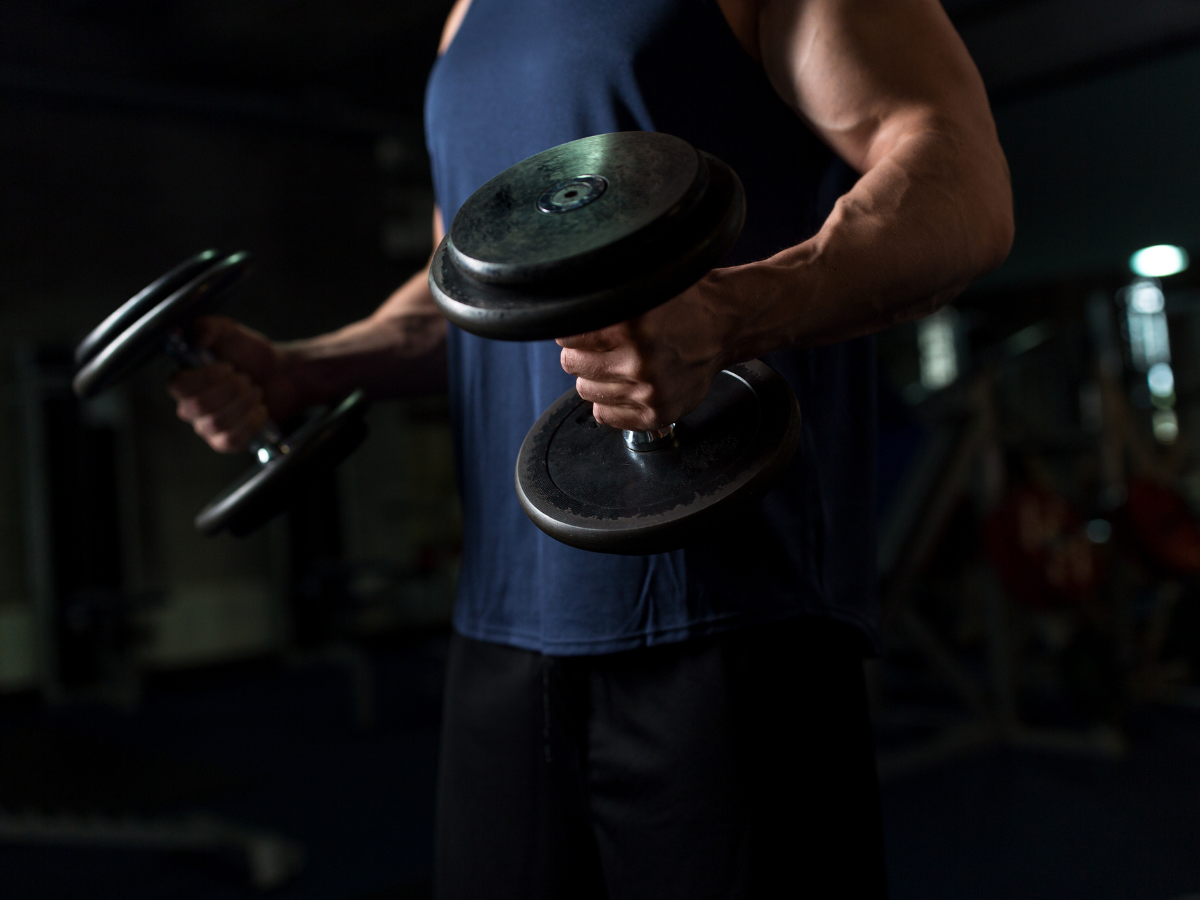
Hammer curls, dumbbell hammer curls, or impartial grasp dumbbell twist is a strength-preparing exercise that explicitly focuses on your biceps and lower arms. A sled twist fluctuates from a customary bicep twist since you utilize an unbiased grasp with your palms confronting each other during the full scope of movement.
So hammer curls are simply a variety of standard bicep twists where your palms point towards one another instead of confronting upwards.
Tips and Tricks: “Hammer curls” work the brachialis and brachioradialis muscles in the lower arms. Hold dumbbells with a nonpartisan grasp (palms confronting one another). Keep your elbows near your body, twist the loads up, and press at the top. Bring down the free weights gradually. Keep up with legitimate structure and begin with a reasonable weight.
Reverse Curls
Reverse curls are a less popular and frequently ignored practice that offers various novel advantages. It would help to draw in your biceps with your palms to do the opposite twist. You can utilize dumbbells, straight bars, an EZ bar, and link connections, and that’s only the tip of the iceberg. The Converse twist is exceptionally advantageous because it connects with your lower arms better, which develops them and reinforces your grasp.
As an immediate advantage, you’re ready to clutch heavier loads, easily convey things in your everyday existence, and appreciate advanced lower arms. Also, you can undoubtedly incorporate opposite twists into your bicep preparation without evolving often.
Tips and Tricks: Reverse curls spin around the lower arm muscles. Hold a free weight or free weight with palms making due. Keep a shoulder-width position and a straight back. Lift the stack by bowing your elbows and getting the lower arms. Do whatever it takes not to use force. Based on controlled overhauls, start with a sensible load to the perfect arrangement before creating the block.
Tips for Effective Dumbbell Pull Workouts
Warm-Up: Reliably start with a genuine preparation to set up your muscles and joints. A couple of moments of light cardio and dynamic extending can assist with forestalling wounds.
Variety: Integrate various hand-weight maneuver practices into your daily schedule, for example, free-weight columns, twisted-around lines, and single-arm columns. This will work on various pieces of your back and forestall levels.
Proper Form:
- Spotlight on keeping up with legitimate structure throughout the activity.
- Keep your back straight, shoulders down and back, and center locked in.
- Make an effort to avoid using energy to lift the weight.
Full Range of Motion: Guarantee that you play out every reiteration through a full scope of movement. This will assist with enacting more muscle filaments and lead to improved results.
Progressive Overload: Progressively increment the weight or opposition as your solidarity progresses. This standard is fundamental for muscle development and strength gains.
Controlled Developments: Control the load on the activity’s concentric (lifting) and unusual (bringing down) periods. This improves muscle commitment and diminishes the gamble of injury.
Mind-Muscle Association: Spotlight the muscles you are focusing on during the activity. This psychological association can assist you with drawing in the right muscles and augment your endeavors.
Relaxing: Inhale consistently all through the development. Breathe out during the concentric stage (lifting) and breathe in during the whimsical stage (bringing down).
Rest and Recuperation: Permit your muscles to recuperate through sets and exercises. Overtraining can deter progress and augment the bet of injury.
Consistency: Consistency is critical. Adhere to your exercise plan and logically challenge yourself to see upgrades after some time.
Offset with Push Activities: Guarantee a decent exercise routine everyday practice by including pushing works (e.g., seat press, shoulder press) to keep away from muscle-lopsided characteristics.
Counsel a Mentor: If you’re new to free weight pull activities or need to consummate your structure, consider counseling a wellness mentor or mentor for direction.
Conclusion :
The best pull exercises with dumbbells offer a complete way to deal with building areas of strength for a clear cutback. Consolidating various developments, for example, dumbbell rows, twisted-around columns, single-arm columns, sweatshirts, and shrugs, guarantees that you target different muscle bunches inside the back. Legitimate structure, full scope of movement, and moderate over-burden are fundamental standards to expand results. Offsetting pull practices with push practices in your routine advances muscle evenness. Consistency, controlled developments, and sufficient rest are key elements in accomplishing a strong and tastefully satisfying back through hand weight pull exercises.
FAQ (Frequently Asked Question)
Can I do pull exercises with dumbbells?
Honestly, dumbbells are one of the most flexible devices for your draw. Besides the customary bicep curl, various activities can successfully assemble muscles around the back, shoulder, and arms.
Is Dumbbell High Pull good?
Indeed, the Dumbbell High Pull is a helpful activity. It focuses on the shoulders, traps, and upper back muscles while captivating the center. This compound development upgrades chest area strength, further develops act, and can be a compelling expansion to your everyday exercise practice for general chest area advancement.
Which pull-up is the hardest?
The most difficult pull-up variety is commonly viewed as the “Muscle-up.” It requires pulling your body up and progressing from a draw up into a plunge, requesting remarkable chest area strength and coordination. Muscle-ups are progressing and require critical preparation to perform.
Is Dumbbell Deadlift a pull exercise?
The dumbbell deadlift can be exceptionally gainful for lifters who may be less solid than they’d like and can be utilized to increment pulling strength and method. As practically every wellness office or very much supplied home rec center will have free weights, the activity is an incredible universally handy fledgling development.
What not to do with dumbbells?
Swinging the weight up, utilizing force and exertion from different body regions is not a productive method for developing arm fortitude. It’s removing the work from the bicep and not confining the muscle. All things being equal, trade your free weight out for a lighter one and attempt to play out the development by getting the objective muscle.
Read More :